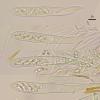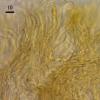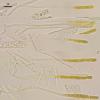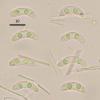
11-01-2026 20:35
Hello.A very tiny pyrenomycete sprouting sparsely

09-01-2026 17:41
Arnold BüschlenHallo, F. dilatata wird von vielen Bryoparasiten

10-01-2026 20:00
Tom SchrierHi all,We found picnidia on Protoparmeliopsis mur

07-01-2026 22:22
 Danny Newman
Danny Newman
Tatraea sp. on indet. hardwood The Swag, Great Sm

10-01-2026 01:18
 Danny Newman
Danny Newman
cf. Neovaginatispora fuckelii on indet. shrub Pre

07-01-2026 10:24
 Danny Newman
Danny Newman
Pezicula sp. on indet. hardwood Appalachian Highl

09-01-2026 10:08
 Blasco Rafael
Blasco Rafael
Hola, en el mismo habitat que la anteriorRetamaDia

08-01-2026 21:22
 Blasco Rafael
Blasco Rafael
Hola, He recogido esta muestra de Orbilia sobre Re

07-01-2026 17:29
 Marc Detollenaere
Marc Detollenaere
Dear Forum,On a barkless Populus I found some smal

10-11-2021 17:33
 Riet van Oosten
Riet van Oosten
Add-on topic http://www.ascofrance.com/forum/7059
this beautifil species was collected several times at leaves of Rubus chamaemorus. Could be from Rutstroemiaceae, but i have not succeeded in finding necessary description there. Four related species which could be found at this host: Sclerotinia tetraspora, Ciboria latipes, Scleromitrula rubicola, Rutstroemia chamaemori - all have different spores (no mention of allantoid shapes).
May be somebody is familiar with this?
Apothecia cupulate, stipitate, 1.3–4.7 mm in diameter, stem 0.8–2 mm high, site densely at both leaf sides, without sclerotia but black stromatized lines are present at the leaf; reddish-brown, hymenial surface minutely speckled, outer surface longitudinally rugose, stem base dark to dark brown.
Excipulum from porrecta, outer hyphae incrusted by brown pigment, at the edge not enlarged hyphoid elements; asci with crozies, euamyloid ring, 97.6–125 x 12.5–14; paraphyses cylindrical, enlarged to upper part, rarely branched, septated, with brown content in upper part, about 113 x 4.4 (width at upper part); spores allantoid, with two medium oils and several tiny, 17 (15.4–18.9) x 4.7 (4.1–5) (n=11).

indeed very interesting! I looked up the protologue of R. chamaemori and also see that your spores are longer and much more curved. My reproduction of the photos is not very good, maybe someone has a pdf with better quality? Perhaps Chris?
It is Holm & Holm 1977, Kew Bull. 31(3):567-572
In R. firma I noticed variation in spore curvature, maybe this is the reason also here. Were the spores always such in your finds? The spores on the photo of Pl. 25C in Holm look like having only small polar guttules, but I am not sure. the description says simply "guttulatae" which does not help.
Zotto
there are raw pictures of the specimen,
https://www.cubby.com/pl/%234364/_3840835779bb44b195cf01598cd04670
I guess they all are done from one apos, but the specimen is not at hand now and i am not sure about spore shape variation (i will reply with this in three weeks when reach the collection).
In this examined apos all spores were that curved.
Nina.?





